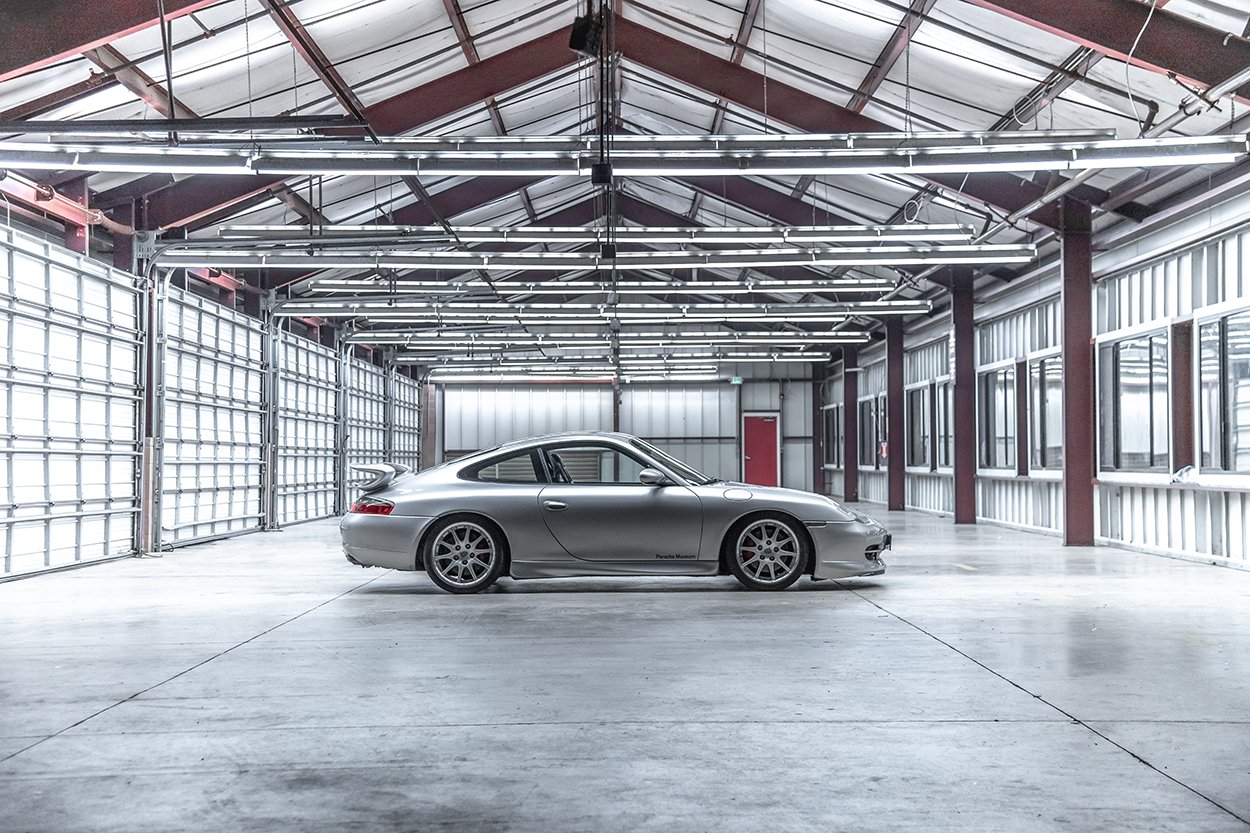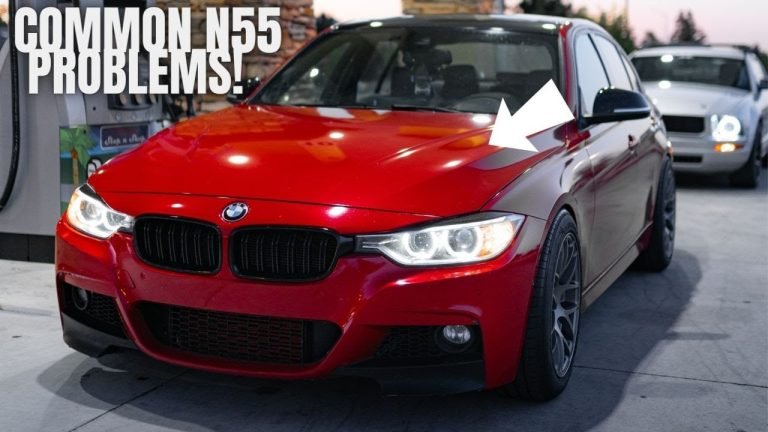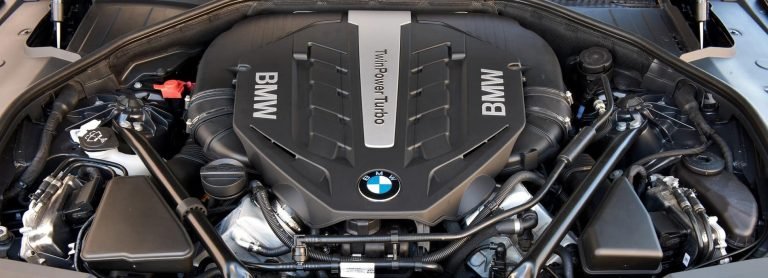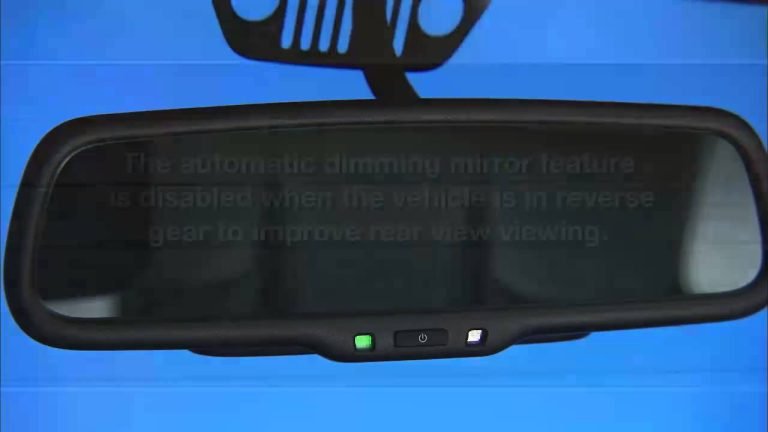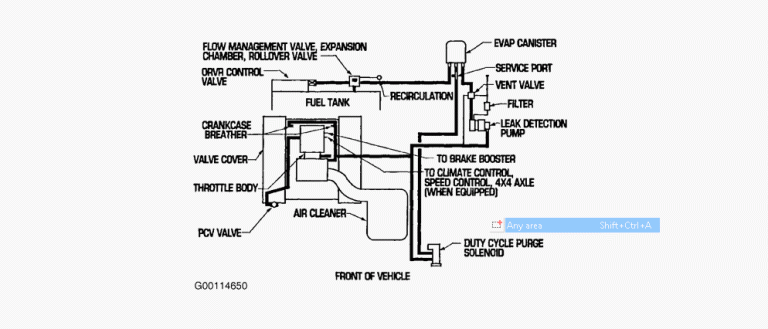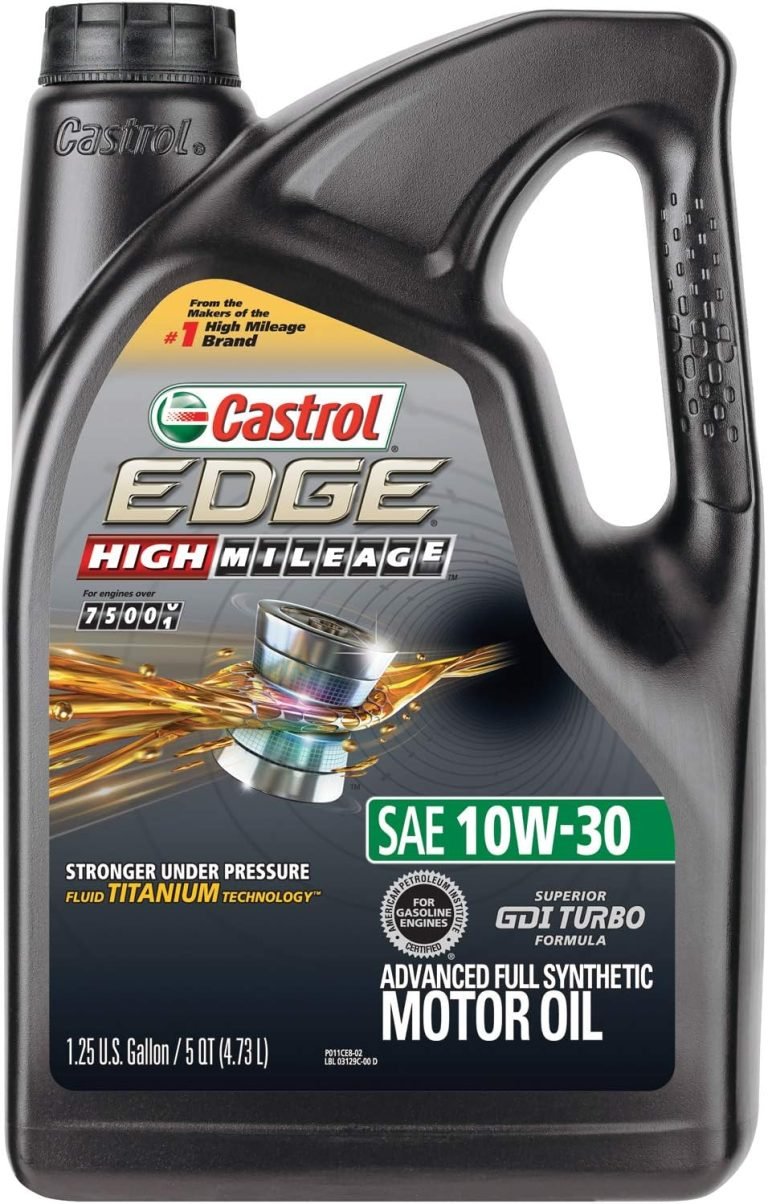Common Problems With Porsche 996: Troubleshooting Tips and Solutions
Common problems with porsche 996 include ims bearing failure and intermediate shaft leaks. The porsche 996 is known for its issues with the ims bearing, which can result in catastrophic engine failure, and leaks from the intermediate shaft can lead to oil seepage and potential damage to other engine components.
These problems can be costly to repair and should be addressed by a qualified technician to ensure the longevity and performance of the vehicle.

Credit: prestigeandperformancecar.com
Identifying Common Issues
The porsche 996 is a beloved sports car that enthusiasts worldwide admire for its sleek design and exhilarating performance. However, like any vehicle, it is not without its flaws. In this section, we will delve into common problems that porsche 996 owners may encounter.
By recognizing these signs and understanding the importance of early detection, you can effectively troubleshoot and maintain your beloved porsche.
Recognizing Signs Of Common Problems In The Porsche 996:
- Intermediate shaft (ims) bearing failure: One of the most notorious issues with the porsche 996 is the potential failure of the intermediate shaft bearing. Look out for odd engine noises, such as a metallic ticking sound, particularly when the engine is idling or during acceleration. You may also notice oil leaks near the clutch area or witness a sudden loss in engine power.
- Rear main seal (rms) leaks: Another common problem is the leaking of the rear main seal. Keep an eye out for any signs of an oil leak at the rear of the engine, which may be accompanied by a burning smell. In some cases, you might notice oil spots on your garage floor or parking space.
- Coolant pipe failures: Porsche 996 models manufactured between 1997 and 2001 are prone to coolant pipe failures. The original plastic coolant pipes can deteriorate over time, leading to leaks that can potentially result in engine overheating. Watch for coolant puddles beneath your vehicle or any signs of engine temperature fluctuations.
- Faulty air-oil separator: Failure of the air-oil separator is a common issue in the porsche 996. Symptoms may include excessive smoke coming from the exhaust, particularly at startup, or increased oil consumption. Additionally, you might experience a loss of engine performance and a rough idle.
- Electrical gremlins: Some owners have reported electrical issues in the porsche 996, such as malfunctioning power windows, faulty door locks, or intermittent problems with the dashboard instruments. These problems can be frustrating, so be vigilant for any abnormal behavior in your vehicle’s electrical system.
It is important to note that not all porsche 996 models will experience these problems, and proper maintenance and regular inspections can help mitigate potential issues. By staying aware of these common problems and their signs, you can promptly address any concerns that may arise, ensuring your porsche 996 remains in top condition for years to come.
Engine Troubleshooting
The porsche 996 is an iconic sports car known for its sleek design and exhilarating performance. However, like any other vehicle, it is not immune to engine troubles. Diagnosing engine performance issues in the porsche 996 requires a keen understanding of its unique mechanics and components.
In this section, we will delve into common engine problems that porsche 996 owners may encounter and provide practical solutions to address them. Furthermore, we will offer valuable tips for maintaining optimal engine health and performance. Whether you’re a porsche enthusiast or a proud owner, this guide will help you navigate the intricacies of engine troubleshooting for the porsche 996.
Let’s dive in and explore these key aspects in more detail.
Diagnosing Engine Performance Issues In The Porsche 996:
- Excessive oil consumption: This can be caused by worn piston rings or valve seals.
- Engine misfires: Faulty spark plugs or ignition coils can lead to misfires and a decrease in performance.
- Loss of power: A clogged air filter or fuel injectors can restrict airflow or fuel delivery, resulting in a loss of power.
Addressing Common Engine Problems And Their Solutions:
- Excessive oil consumption: Changing the piston rings or valve seals can resolve this issue.
- Engine misfires: Replacing faulty spark plugs or ignition coils can restore proper engine function.
- Loss of power: Regularly cleaning or replacing the air filter and fuel injectors can help maintain optimal engine performance.
Tips For Maintaining Optimal Engine Health And Performance:
- Regularly check and change the engine oil and filter according to the manufacturer’s recommendations.
- Keep an eye on the oil level and top it up as needed to prevent excessive oil consumption.
- Use high-quality fuel and additives to keep the fuel injectors clean and ensure efficient combustion.
- Maintain the correct tire pressure to reduce strain on the engine and improve fuel efficiency.
- Don’t ignore warning lights or unusual engine noises, as these may indicate underlying issues that require attention.
To enjoy the exhilarating performance and reliability that the porsche 996 offers, proper engine maintenance and prompt troubleshooting are essential. By familiarizing yourself with common engine problems and following our suggested solutions, you can help keep your porsche 996 running smoothly.
Implementing these tips for optimal engine health and performance will ensure you get the most out of your porsche ownership experience.
Electrical System Problems
The electrical system of the porsche 996 is one of the most critical components that often poses problems for owners. From faulty wiring to malfunctioning sensors, electrical issues can significantly impact the overall performance of this iconic vehicle. In this section, we will discuss the common electrical system problems that porsche 996 owners encounter and provide solutions and preventive measures to help you troubleshoot and address these issues effectively.
Troubleshooting Common Electrical System Issues In The Porsche 996:
- Battery drain: A common problem faced by porsche 996 owners is battery drainage. This can be caused by electrical faults, such as a failing alternator or a faulty control module. To troubleshoot this issue, check the battery voltage, inspect the alternator, and ensure that all electrical components are functioning correctly.
- Faulty wiring: Over time, the wiring in a porsche 996 can become worn or damaged, leading to electrical malfunctions. Common symptoms include flickering lights, intermittent power loss, or unresponsive controls. To identify faulty wiring, perform a visual inspection and test the affected circuits using a multimeter. Once the issue is pinpointed, replace or repair the damaged wiring.
- Malfunctioning sensors: The porsche 996 relies on various sensors to regulate its electrical systems and ensure optimal performance. However, these sensors can malfunction, leading to issues such as incorrect readings or error codes. Troubleshooting involves diagnosing the faulty sensor using specialized diagnostic tools and replacing it if necessary.
Understanding The Impact Of Electrical Problems On Overall Performance:
- Reduced functionality: Electrical system problems can result in reduced functionality of essential components such as the lighting system, power windows, or climate control. These issues not only affect convenience but also impact safety and overall driving experience.
- Engine performance issues: Electrical malfunctions can disrupt critical systems in your porsche 996, including the fuel injection, ignition, and engine management systems. This can result in engine misfires, reduced power output, or even engine failure. Addressing electrical problems promptly is necessary to maintain optimal engine performance.
- Safety concerns: Electrical system malfunctions can compromise safety features in the porsche 996, including abs, airbags, and traction control. It is crucial to resolve any electrical issues promptly to ensure the proper functioning of these safety systems.
Solutions And Preventive Measures For Electrical System Malfunctions:
- Regular maintenance: Adhering to the manufacturer’s recommended maintenance schedule can help prevent electrical issues in your porsche 996. Routine inspections and servicing can identify potential problems before they escalate, saving you from costly repairs.
- Proper installation of aftermarket components: If you plan on installing aftermarket components or accessories, ensure they are installed correctly and do not interfere with the electrical system’s performance. Improper installation can lead to electrical issues and void your warranty.
- Professional diagnosis and repairs: When faced with electrical problems in your porsche 996, it is advisable to seek professional diagnosis and repairs from experienced technicians. They have the expertise and equipment necessary to accurately identify and address electrical faults without causing further damage.
- Protect electrical components: To prevent electrical malfunctions, make sure to protect electrical components from moisture, excessive heat, and vibrations. This includes parking the vehicle in a sheltered area, using dielectric grease on connections, and securing wiring harnesses properly.
By understanding common electrical system problems in the porsche 996 and implementing the appropriate solutions and preventive measures, you can ensure a reliable and enjoyable driving experience while maintaining the integrity of your vehicle’s electrical systems.
Air Conditioning And Cooling System
The air conditioning and cooling system of a porsche 996 is crucial for maintaining a comfortable driving experience, especially during hot summer months. However, like any other sophisticated automobile, problems can arise in these systems. In this section, we will discuss common issues with the air conditioning and cooling system in the porsche 996, and provide tips for identifying and troubleshooting these problems.
Identifying Cooling System Issues And Air Conditioning Problems In The Porsche 996:
- Coolant leakage: Look for any signs of coolant leaks, such as puddles underneath the vehicle or a decrease in coolant levels. This could indicate a damaged hose, radiator, or water pump.
- Overheating: If your porsche 996 is consistently running hotter than normal or frequently overheating, it may be due to a malfunctioning thermostat, fan, or water pump.
- Weak airflow: Insufficient airflow from the air conditioning vents may be caused by a clogged cabin air filter, a faulty blower motor, or a blocked air intake.
- Unusual noises: Pay attention to any unusual noises coming from the cooling system or air conditioning system, such as squealing, grinding, or rattling sounds. These noises could indicate issues with the compressor, fan, or other components.
Troubleshooting Tips And Solutions For Cooling System And Ac Malfunctions:
- Regular maintenance: Maintain a regular maintenance schedule for your porsche 996, including flushing and refilling the coolant, replacing the air filter, and inspecting the belts and hoses.
- Check the thermostat: Ensure that the thermostat is functioning properly and opening and closing at the correct temperatures. A faulty thermostat can cause the engine to overheat or the air conditioning system to blow warm air.
- Inspect the fans: Check that the cooling fans are working correctly and turning on when the engine reaches the appropriate temperature. Faulty fans can result in overheating issues.
- Clean the condenser coils: Over time, the condenser coils can accumulate dirt and debris, hindering the performance of the air conditioning system. Regularly clean the coils to maintain optimal cooling efficiency.
Remember, it’s essential to address any cooling system or air conditioning problems promptly to prevent further damage and maintain the performance of your porsche 996.
Regular Maintenance Practices To Ensure Optimal Cooling System Performance:
- Monitor coolant levels: Regularly check the coolant levels and top up if necessary. Low coolant levels can lead to engine overheating and potential damage.
- Inspect hoses and belts: Inspect the hoses and belts for any signs of wear, leaks, or cracks. Replace any damaged components immediately to prevent system failure.
- Clean the air intake: Regularly clean the air intake to remove dirt, leaves, or debris that may obstruct airflow. This allows the cooling system to function efficiently.
- Schedule professional inspections: Consider scheduling regular professional inspections to identify and address any potential issues before they become major problems.
By staying proactive and following these maintenance practices, you can help ensure optimal performance and longevity of your porsche 996’s air conditioning and cooling system.
Transmission And Clutch Problems
The porsche 996 is a legendary sports car in its own right, but like any vehicle, it can encounter its fair share of problems. One crucial area where porsche 996 owners may face issues is with their transmission and clutch.
These components are essential for smooth gear shifting and optimal performance, so it’s important to address any problems promptly. In this section, we’ll explore some common transmission and clutch problems that porsche 996 owners may encounter, as well as troubleshooting techniques to help resolve these issues.
Additionally, we’ll discuss the significance of regular maintenance in preventing transmission and clutch problems. So let’s dive in and explore these topics further.
Common Transmission And Clutch Problems In The Porsche 996
- Grinding or whining noises when shifting gears: This may indicate worn synchronizers or bearings, which require attention from a qualified technician.
- Difficulty in engaging gears: Issues with gear synchronization, hydraulics, or the clutch master cylinder could be the culprits behind this problem.
- Slipping clutch: A worn-out clutch plate can lead to a slipping clutch, resulting in power loss and difficulty in shifting gears.
- Clutch pedal vibrations: Vibrations while depressing the clutch pedal may point to issues with the flywheel or pressure plate.
Troubleshooting Techniques For Transmission And Clutch Issues
- Check the transmission fluid: Low fluid levels or dirty transmission fluid could be the cause of shifting problems. Ensure the fluid is at the proper level and consider changing it as recommended by porsche.
- Inspect the clutch system: Examine the clutch hydraulics, such as the slave cylinder, master cylinder, and clutch line, for leaks or malfunctions. Additionally, evaluate the clutch pedal travel and adjust it if necessary according to porsche specifications.
- Examine the clutch components: If you’re experiencing a slipping clutch or difficulty in engagement, it’s crucial to inspect the clutch assembly, including the clutch plate, pressure plate, and release bearing. Replace any worn or damaged components.
How To Prevent Transmission And Clutch Problems With Regular Maintenance
Regular maintenance is vital in ensuring the longevity and performance of your porsche 996’s transmission and clutch system. Here are some essential steps to prevent these problems:
- Follow porsche’s recommended maintenance schedule: Adhering to the manufacturer’s guidelines for transmission fluid changes, clutch inspections, and maintenance can help identify and address potential issues before they become major problems.
- Drive the car as recommended: Avoid aggressive driving techniques such as harsh shifting, clutch riding, or excessive revving, as these can accelerate wear and tear on the transmission and clutch.
- Be mindful of clutch usage: When driving a manual porsche 996, utilize proper clutch technique by fully depressing the clutch pedal when shifting gears. Partially engaging the clutch can lead to premature wear.
- Regularly inspect for leaks: Check for any leaks in the transmission or clutch system, such as fluid leaks or hydraulic leaks, and address them immediately.
By following these troubleshooting techniques and implementing regular maintenance practices, porsche 996 owners can mitigate transmission and clutch problems, ensuring the smooth and exhilarating driving experience that the car is known for.
Suspension And Steering Troubles
The suspension and steering system of the porsche 996 is a critical component that directly impacts the handling and performance of the vehicle. Over time, however, certain issues may arise that can affect the overall driving experience. In this section, we will address common suspension and steering troubles encountered in the porsche 996 and provide troubleshooting techniques and solutions for improved handling.
Regular inspections and maintenance for suspension and steering components are of utmost importance to ensure optimal performance and safety on the road. Let’s dive right into the key points:
Addressing Common Suspension And Steering Issues In The Porsche 996:
- Worn or damaged suspension bushings can lead to excessive noise, vibrations, and even improper wheel alignment. Regularly check for signs of wear or deterioration, such as cracks or sagging.
- Faulty shock absorbers can cause a noticeable decrease in ride comfort and handling performance. Consider replacing them if you experience excessive bouncing, swaying, or a loose feeling while driving.
- Uneven tire wear can result from misaligned or improperly adjusted suspension and steering components. Make sure to have the alignment checked regularly to avoid premature tire wear and achieve optimal handling.
- Steering rack issues can manifest in symptoms like excessive play, difficulty in steering, or a clunking noise. If you notice any of these signs, have the steering rack inspected and repaired if necessary.
Troubleshooting Techniques And Solutions For Improved Handling:
- Have a professional technician perform a comprehensive suspension inspection to identify any potential issues or areas of concern.
- Replace worn or damaged suspension components with high-quality replacements to restore proper functionality and improve overall handling.
- Consider upgrading to aftermarket suspension components, such as performance shocks or fine-tuning options, to enhance the handling characteristics of your porsche 996.
- Regularly check the tire pressure and ensure that it is maintained at the recommended levels for optimal performance and even tire wear.
- Perform routine maintenance tasks, such as lubricating suspension and steering components, tightening bolts and fittings, and inspecting for any signs of wear or damage.
Importance Of Regular Inspections And Maintenance For Suspension And Steering Components:
- Regular inspections can help identify potential issues before they escalate into more significant problems, saving you time, money, and potential safety concerns in the long run.
- Timely maintenance and servicing can extend the lifespan of your suspension and steering components, ensuring consistent performance and optimal handling.
- Well-maintained suspension and steering systems contribute to a smoother, more comfortable ride, enhancing overall driving pleasure.
- Keeping your suspension and steering components in top condition can also help preserve the resale value of your porsche 996, as potential buyers are likely to appreciate a well-maintained vehicle.
By addressing common suspension and steering issues, troubleshooting as needed, and maintaining regular inspections and maintenance, you can ensure that your porsche 996 delivers the exceptional handling and driving experience that it is renowned for. Don’t let these problems hinder your enjoyment of this iconic sports car – take proactive measures to keep your suspension and steering system in optimal condition.
Brake System Concerns
The brake system is a critical component of any vehicle, and the porsche 996 is no exception. While this iconic sports car has many admirable qualities, it is not without its share of common brake system concerns. Understanding these issues can help you diagnose, troubleshoot, and prevent any potential problems, ensuring optimal brake performance.
Diagnosing Brake System Problems In The Porsche 996:
- Soft or spongy pedal: If you notice that your brake pedal feels soft or spongy when you apply pressure, it could indicate air in the brake lines or a problem with the brake fluid.
- Noisy brakes: Squeaking, squealing, or grinding noises when you brake may be a result of worn brake pads or rotors. Ignoring these sounds can lead to further damage and decreased braking performance.
- Pulling to one side: If your porsche 996 veers to one side when you brake, it could be a sign of uneven brake pad wear, a stuck caliper, or a problem with the brake hoses.
- Brake warning light: The brake warning light on your dashboard is an indicator that there is a problem with the brake system. It could be as simple as low brake fluid or a more serious issue that requires immediate attention.
Troubleshooting Tips And Solutions For Brake-Related Issues:
- Bleeding the brake system: If you experience a soft or spongy pedal, bleeding the brake system can remove any air bubbles that may have entered the system. This process should be done carefully and thoroughly.
- Replacing brake pads and rotors: Noisy brakes can often be resolved by replacing worn brake pads and rotors. Regular inspections and maintenance can help identify these issues before they become a larger problem.
- Checking and cleaning calipers: If your porsche 996 is pulling to one side, checking and cleaning the calipers can help resolve any issues with stuck calipers. It is essential to address this problem promptly to ensure even brake pad wear and optimal braking performance.
- Diagnostic scan tool: When faced with a brake warning light, using a diagnostic scan tool can help identify the specific issue causing the warning. This tool provides valuable information to pinpoint the problem and facilitate a suitable solution.
Preventive Measures And Maintenance Practices For Optimal Brake Performance:
- Regular inspections: Scheduled inspections allow you to detect any potential brake system problems early on, ensuring optimal performance and reducing the risk of expensive repairs.
- Brake fluid flush: Flushing the brake fluid according to the manufacturer’s recommendations helps maintain proper brake system function and prevents contamination.
- Proper bedding of new brake pads: When installing new brake pads, following proper bedding procedures helps them function optimally and extends their lifespan.
- Gentle braking: Avoiding harsh or sudden braking can help extend the life of your brake pads, prevent uneven wear, and minimize stress on the brake system.
By understanding how to diagnose brake system problems, troubleshoot issues, and maintain your porsche 996’s brake system, you can ensure optimal performance and safe driving experiences. Stay proactive in the care of your brakes, and remember to address any concerns promptly to prevent further damage.
Interior And Exterior Component Failures
The porsche 996 is undeniably a remarkable vehicle, with its sleek design and high-performance capabilities. However, like any other car model, it has its fair share of common problems. In this blog post, we will focus on addressing the interior and exterior component failures that porsche 996 owners often encounter.
From troubleshooting techniques to maintenance tips, we aim to help you keep your car in top shape. So, let’s delve into the world of porsche 996 interior and exterior issues and explore the possible solutions to these challenges.
Common Interior And Exterior Component Failures In The Porsche 996
- Dashboard cracks: One of the most frequently reported problems with the porsche 996 is dashboard cracking. Over time, exposure to sunlight and temperature changes can cause the dashboard to develop unsightly cracks. Additionally, the material used on some older models is known to be prone to this issue.
- Peeling buttons and switches: Another common problem is the peeling of buttons and switches on the interior console. This occurs due to wear and tear, as well as constant use. The buttons may lose their functionality, affecting the overall user experience.
- Fading interior trim: The porsche 996’s interior trim, including door panels and center console, may experience fading, especially in vehicles exposed to prolonged sunlight. Faded interior trim can be both aesthetically displeasing and reduce the overall perceived quality of the car.
- Headlight lens yellowing: The headlight lenses on the porsche 996 are susceptible to yellowing over time, which can impair visibility and compromise the car’s safety. This is caused by exposure to uv rays, oxidation, and other environmental factors.
Troubleshooting Techniques For Various Interior And Exterior Issues
- Dashboard cracks: If you notice cracks on your porsche 996 dashboard, you can consider various options for repair or replacement. These include professional dashboard repair kits, leather wraps, or even replacing the entire dashboard.
- Peeling buttons and switches: For buttons and switches that are peeling or losing their functionality, you may need to replace or repair them. Genuine replacement parts from authorized dealerships or professional repair services can help restore the original look and functionality.
- Fading interior trim: To deal with fading interior trim, you can consider various options. Repainting or refinishing the affected areas using color-matched automotive paint can help restore the original appearance. Additionally, using interior protectant products and regularly cleaning the interior can prevent further fading.
- Headlight lens yellowing: If your porsche 996’s headlights suffer from yellowing, there are methods to remedy the issue. Headlight restoration kits, professional polishing services, or replacing the entire headlight assembly are possible solutions to restore clarity and improve visibility.
Maintaining the aesthetics and functionality of the interior and exterior components of your porsche 996 is crucial for its overall value and driving experience. By addressing these common issues, troubleshooting them effectively, and staying proactive with maintenance, you can ensure that your porsche 996 remains a symbol of luxury and superior performance.
Exhaust System Troubleshooting
The exhaust system is an essential component of the porsche 996, ensuring the efficient flow of gases and enhancing engine performance. However, like with any vehicle, it is not uncommon to experience problems with the exhaust system. In this section, we will explore common issues that porsche 996 owners may encounter with their exhaust systems, along with troubleshooting tips and regular maintenance practices to keep it running smoothly.
Identifying Exhaust System Problems In The Porsche 996:
- Unusual noises coming from the exhaust: Rattling, hissing, or popping sounds may indicate issues with the exhaust system, such as loose or damaged components.
- Decreased engine performance: If you notice a decrease in power, slow acceleration, or difficulty reaching high speeds, it could be a sign of exhaust system problems.
- Exhaust smoke and strong odors: Excessive smoke, particularly black or blue smoke, and strong, unpleasant odors could be indicative of exhaust leaks or burning oil.
- Poor fuel efficiency: If you find yourself visiting the gas station more often than before, it might be due to an inefficient exhaust system.
Addressing Common Exhaust System Issues And Their Solutions:
- Exhaust leaks: Look for any visible signs of damage or corrosion, and repair or replace the affected components as necessary. In some cases, tightening clamps or bolts might resolve minor leaks.
- Catalytic converter failure: If the check engine light is illuminated and you experience reduced power, it might be due to a faulty catalytic converter. Replacing the converter is typically the solution.
- Damaged muffler: A damaged or worn-out muffler can result in excessive noise. Consider a complete replacement or repair if feasible.
- Oxygen sensor malfunction: Faulty oxygen sensors can cause engine performance issues and negatively impact fuel efficiency. Replacement is often required to rectify the problem.
Regular Maintenance Practices For Optimal Exhaust System Performance:
- Inspect regularly: Keep an eye out for any signs of damage, rust, or corrosion during routine maintenance checks. Addressing small issues promptly can prevent them from turning into major problems.
- Clean exhaust tips: Regularly clean the exhaust tips to prevent the buildup of dirt, debris, and carbon residue. This helps maintain the aesthetic appeal of your porsche 996.
- Use high-quality fuel: Opt for high-quality fuel to minimize the accumulation of carbon deposits in the exhaust system, promoting better performance and longevity.
- Schedule professional inspections: To ensure thorough maintenance, consider taking your porsche 996 to a reputable mechanic or dealership for professional inspections and any necessary repairs.
By being proactive in identifying and addressing exhaust system problems promptly, as well as following regular maintenance practices, you can ensure that your porsche 996 continues to provide an exhilarating driving experience.
Frequently Asked Questions For Common Problems With Porsche 996
What Are Common Problems With The Porsche 996?
Some common problems with the porsche 996 include ims bearing failure, coolant leaks, and oil separator issues.
How Do I Know If My Porsche 996 Has An Ims Bearing Failure?
Signs of ims bearing failure in a porsche 996 include engine noise, rough idle, and oil leaks.
How Can I Prevent Coolant Leaks In My Porsche 996?
To prevent coolant leaks in a porsche 996, regular cooling system maintenance and inspections are essential.
Conclusion
To sum up, the porsche 996 is an iconic vehicle with its fair share of problems. From the infamous ims bearing failure to the durability concerns of the plastic coolant pipes, these issues have caused headaches for enthusiasts. However, it’s important to note that not all 996s experience these problems, and with proper maintenance and care, many owners have enjoyed trouble-free driving.
Despite its shortcomings, the 996 still offers a thrilling driving experience and a classic design that continues to turn heads on the road. If you’re thinking of purchasing a porsche 996, it’s crucial to do thorough research, check for potential issues, and invest in regular maintenance to ensure a smooth ownership experience.
By being aware of the common problems and taking appropriate measures, you can enjoy the thrill of owning a porsche 996 without being taken by surprise.

